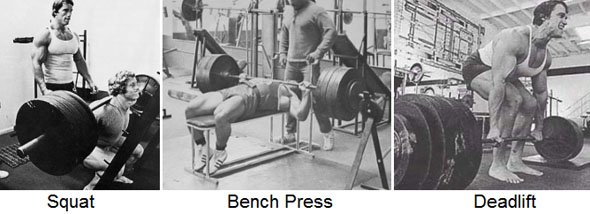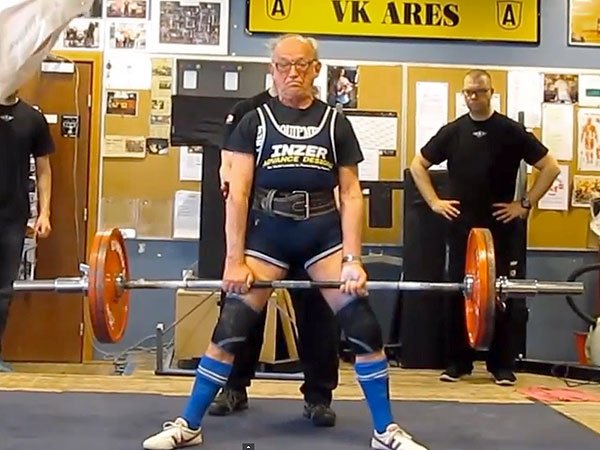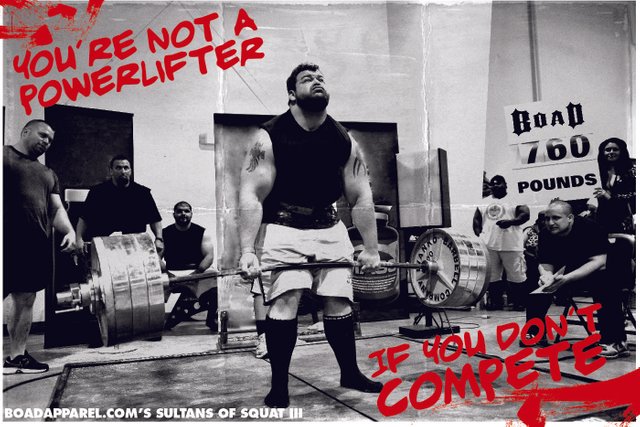How to Become a Beast - PowerLifting
This is my second post about sports in my blog and there's more to come. Today i'll talk about my favorite sport, so let's start.

In my experience, in the world of bodybuilding and strength sports are many different modalities or many sports that underlie the idea of lifting weights. Today we want to tell you something more about a sport that is becoming quite fashionable in networks, powerlifting, what it consists of, how it is trained and what benefits it has.
Some sports derived from the lifting of loads have aesthetic objectives as is the case bodybuilding (and all its variants), others are even Olympic disciplines, such as weightlifting, unlike powerlifting, also called power lifting, which is not currently a Olympic discipline.

Powerlifting is a sport discipline in which three fundamental and compulsory exercises are performed in any routine of any person who performs workouts with loads, whatever their objectives: squats, bench presses, and deadlifts.
Unlike weightlifting, the movements of these exercises have a somewhat inferior route, by not starting from the ground. While in weightlifting is very important technique and especially the binomial force-speed in the powerlifting bonus plus the maximum strength.
The exercises performed in powerlifting competitions are basic multiarticular exercises that involve large muscle groups, fundamental in the development of strength and also on the way to a clear muscle hypertrophy. The anabolic environment that is generated after a good session of squats is practically unbeatable, without counting the large number of muscles that we exercise.

Despite the fact that powerlifting is a fairly complete sporting discipline in the field of bodybuilding and exercises with loads, it is recognized by the International Olympic Committee but not as an Olympic sport (at least for the time being).
Powerlifting training must be correctly planned taking into account especially what day is the competition, because, based on it, we should structure our training taking into account the volume and intensity of each training. The correct periodization is key.
We must not forget that in the strength training, the Central Nervous System has a lot to say, and if we do not know how to properly organize the mesociclos and our strength routines, we can easily fall into a stagnation or even worsening of our brands.
We must take into account the basic guidelines for a progression of continuous strength, in which we apply a few weeks of accumulation of loads increasing series and maintaining weights, to then begin with a reduction of series and repetitions increasing the weight.
As in any sport, frequency is key, and if we can apply training for more days, we will progress more quickly without any doubt. The higher the frequency of training, the more energy we will spend, which means that our diet should also be better and better. If we want to advance in this sport, it is advisable to take a diet that is generally hypercaloric, moderate or at least normocaloric.

Generally, in powerlifting competitions, each person is allowed to make three attempts at each type of lift. The valid lift with the greatest weight will be the one that is counted as the official mark for the total of the competition. If it were the case that two people have the same brand, the winner will be the lifter with the least body weight.
Depending on the type of championship that takes place, organization and number of participants, there are usually different categories distributed by ranges of body weight and sex, generally the existing categories are the following:
Female: 43 kilograms, 47 kilograms, 52 kilograms, 57 kilograms, 63 kilograms, 72 kilograms, 84 kilograms, +84 kilograms.
Male: 52 kilograms, 59 kilograms, 66 kilograms, 74 kilograms, 83 kilograms, 93 kilograms, 105 kilograms, 120 kilograms, +120 kilograms.
Another option when the number of participants is not very high, is to use what are called points wilks. This score is based on multiplying the weight lifted by a coefficient following this table. This type of score assesses the relative strength of each athlete. For example:
A male person of 57.4 Kg has a coefficient of 0.8889, if his mark in Dead Weight at 1 RM is 145 Kg, that person has 145 * 0.8889 = 128.8905 wilks points.
While a male weighing 67.4 kg and lifting the same weight, he will own 145 * 0.7729 = 111.9255 wilks points.
For all those who do not want to perform calculations, you have an official calculator of the IPF (International Powerlifting Federation) by clicking here.

Ultimately i want to share the last video from Powerlifting Motivation, one of the biggest communities of powerlifting around the world

This post has received a 0.21 % upvote from @drotto thanks to: @armandoandre.
This post has received a 0.10 % upvote from @speedvoter thanks to: @armandoandre.
Hi! I am a robot. I just upvoted you! I found similar content that readers might be interested in:
https://www.powerliftingtowin.com/what-is-powerlifting/